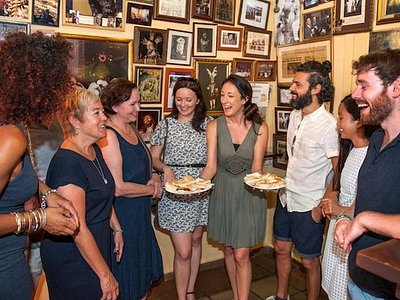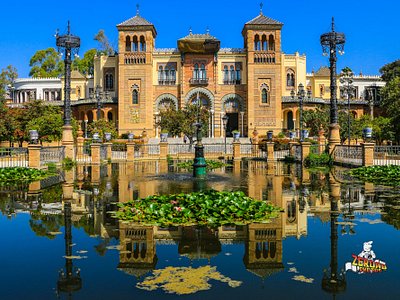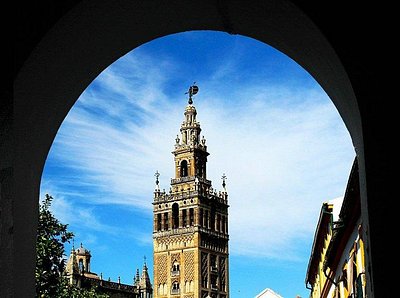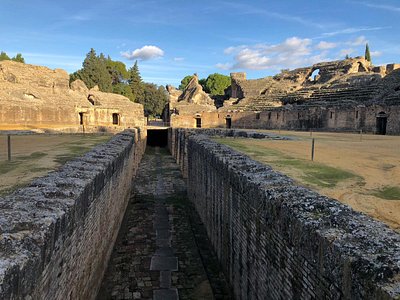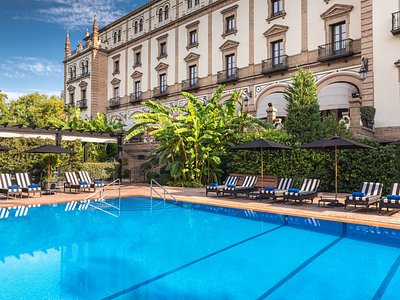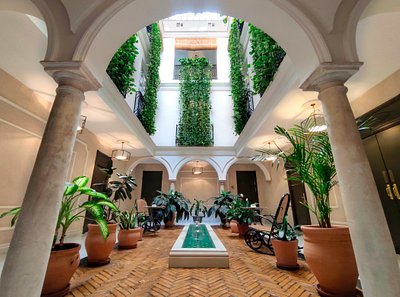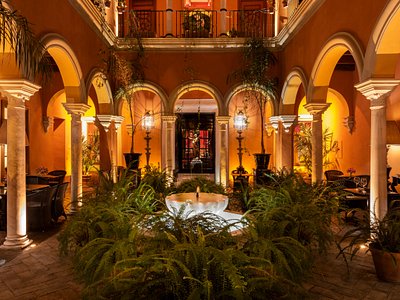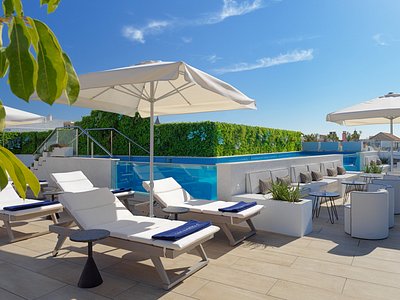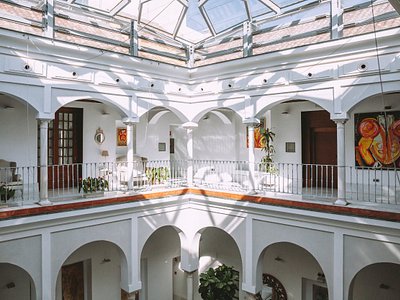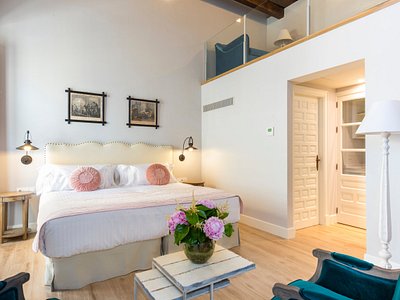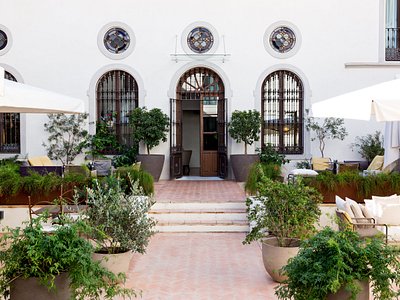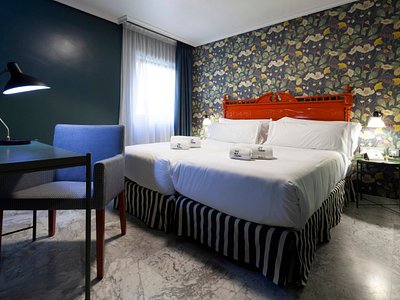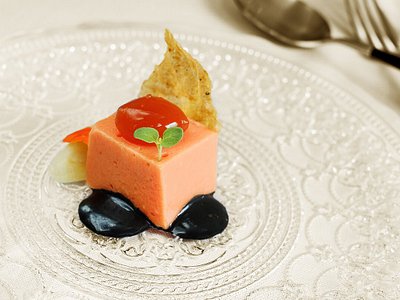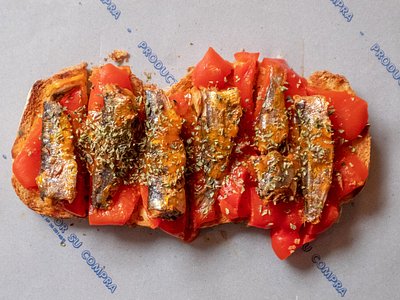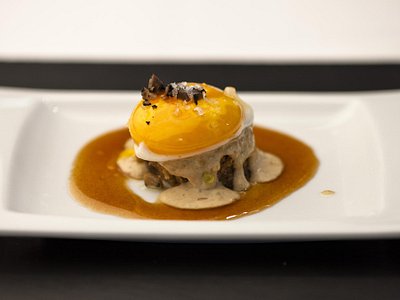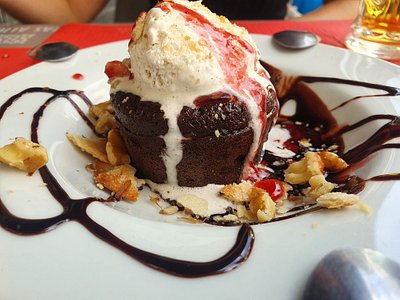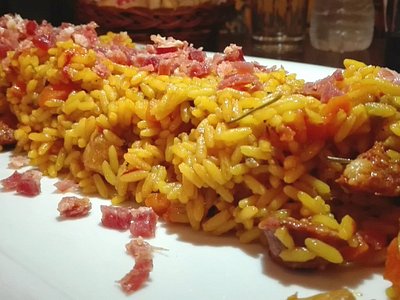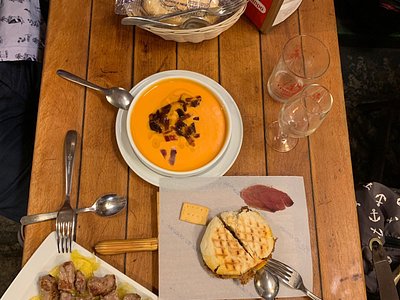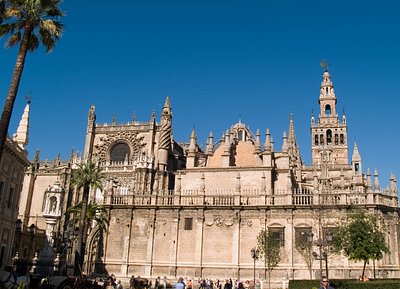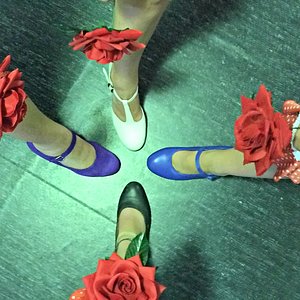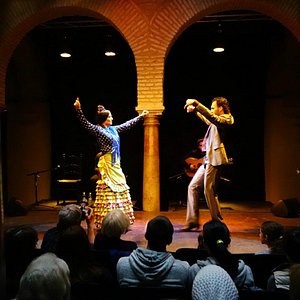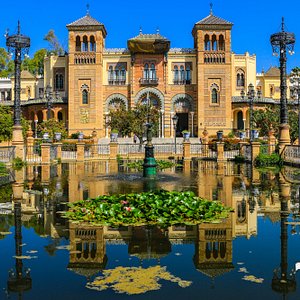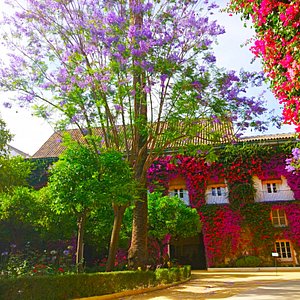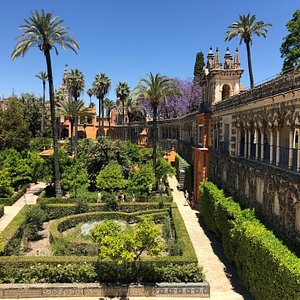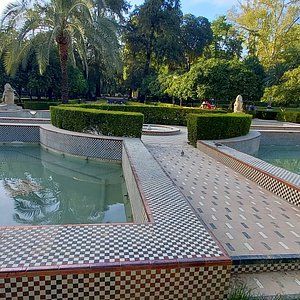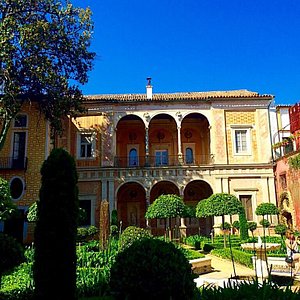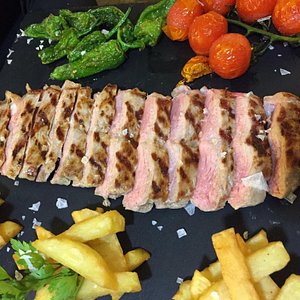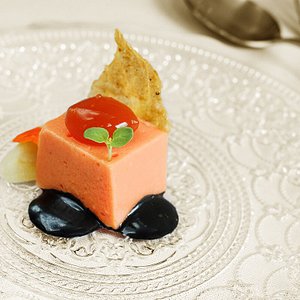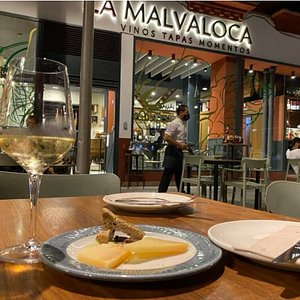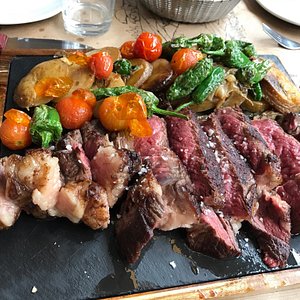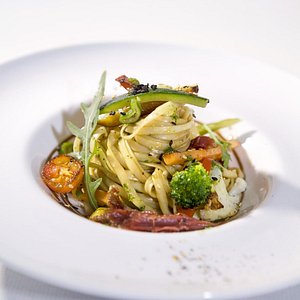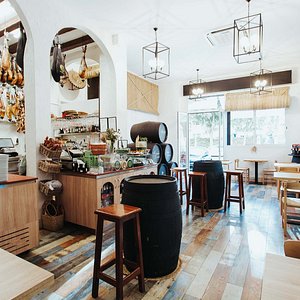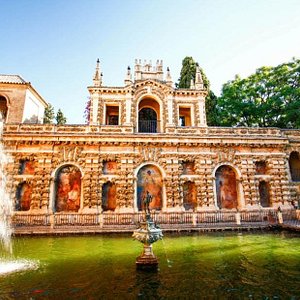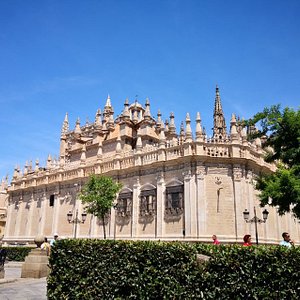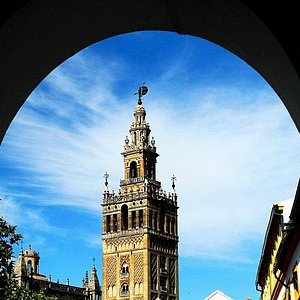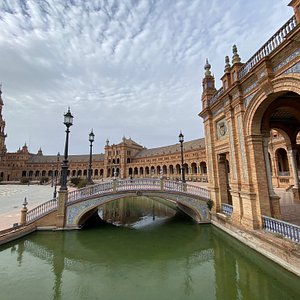Explore Seville
Plan Your Trip to Seville: Best of Seville Tourism
Essential Seville


Traveler Guides

An architect's guide to Seville
 Catedral de Sevilla26,919You can’t ignore the city’s crown jewel: the cathedral. Seville has the largest Gothic church in the world. It was built on top of a 12th-century mosque, but some of the Islamic elements remain, such as the courtyard and the minaret, which was transformed into the elegant La Giralda bell tower. Inside, you can appreciate many treasures, such as the show-stopping main altarpiece and the tomb of Christopher Columbus.
Catedral de Sevilla26,919You can’t ignore the city’s crown jewel: the cathedral. Seville has the largest Gothic church in the world. It was built on top of a 12th-century mosque, but some of the Islamic elements remain, such as the courtyard and the minaret, which was transformed into the elegant La Giralda bell tower. Inside, you can appreciate many treasures, such as the show-stopping main altarpiece and the tomb of Christopher Columbus. Real Alcazar de Sevilla36,208The Alcazar, or Royal Palace, is a masterpiece of Mudejar architecture. (Mudejar is the term used to name the Muslims that stayed in Spain after the Christian reconquest.) Built in the 14th century with intricate carved walls, it has survived almost intact until the present day. Look familiar? You may recognize it as Dorne’s palace in Games of Thrones.
Real Alcazar de Sevilla36,208The Alcazar, or Royal Palace, is a masterpiece of Mudejar architecture. (Mudejar is the term used to name the Muslims that stayed in Spain after the Christian reconquest.) Built in the 14th century with intricate carved walls, it has survived almost intact until the present day. Look familiar? You may recognize it as Dorne’s palace in Games of Thrones.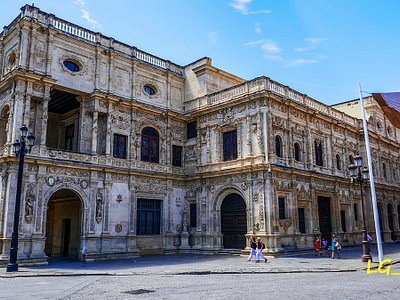 Ayuntamiento (City Hall)438I have to hand it to the Italians: Renaissance architecture wasn’t as popular in Spain. But it did inspire a new style in Seville, called Plateresque. The first—and perhaps the most exquisite—example is the City Hall façade. Built in the 16th century, when Seville was among the richest cities in the world, the municipal building is as intricate as the city itself.
Ayuntamiento (City Hall)438I have to hand it to the Italians: Renaissance architecture wasn’t as popular in Spain. But it did inspire a new style in Seville, called Plateresque. The first—and perhaps the most exquisite—example is the City Hall façade. Built in the 16th century, when Seville was among the richest cities in the world, the municipal building is as intricate as the city itself.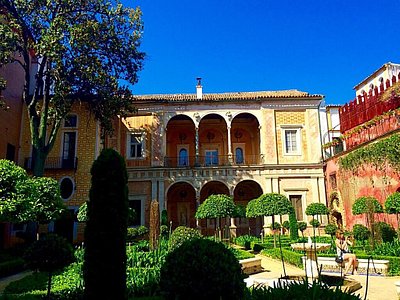 Casa de Pilatos3,816This gorgeous palace belongs to the House of Medinaceli, one of the oldest noble families in Spain. It combines the finest elements of Mudejar and Renaissance architecture, making it an essential visit to understand the city’s various influences. The tilework that covers most of its walls and floors will leave you in total awe. Fun fact: In 1966, Grace Kelly and Jackie Kennedy held a charity gala here.
Casa de Pilatos3,816This gorgeous palace belongs to the House of Medinaceli, one of the oldest noble families in Spain. It combines the finest elements of Mudejar and Renaissance architecture, making it an essential visit to understand the city’s various influences. The tilework that covers most of its walls and floors will leave you in total awe. Fun fact: In 1966, Grace Kelly and Jackie Kennedy held a charity gala here. Palacio de San Telmo184The Baroque style ruled Europe in the 17th and 18th centuries. You can find many Baroque gems in the city, such as this magnificent palace conceived as a naval academy. Although you aren’t allowed to go inside, you can admire its most important feature—the façade and the impressive entrance. Look closely: The marble doorway depicts allegories of the arts and sciences.
Palacio de San Telmo184The Baroque style ruled Europe in the 17th and 18th centuries. You can find many Baroque gems in the city, such as this magnificent palace conceived as a naval academy. Although you aren’t allowed to go inside, you can admire its most important feature—the façade and the impressive entrance. Look closely: The marble doorway depicts allegories of the arts and sciences.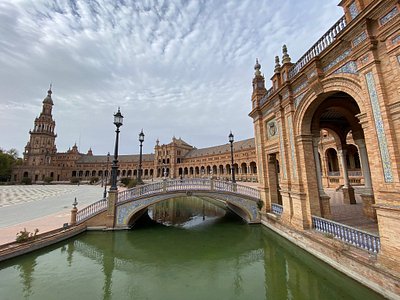 Plaza de España45,021In 1929, Seville celebrated its first World’s Fair, and this incredible complex was the centerpiece of the exhibition. Inspired by Spanish Renaissance architecture, the columned circular plaza is a symbol of the country, with 50 alcoves covered with colored tiles representing each province of Spain. It has appeared in many films, including Lawrence of Arabia and the Star Wars prequels.
Plaza de España45,021In 1929, Seville celebrated its first World’s Fair, and this incredible complex was the centerpiece of the exhibition. Inspired by Spanish Renaissance architecture, the columned circular plaza is a symbol of the country, with 50 alcoves covered with colored tiles representing each province of Spain. It has appeared in many films, including Lawrence of Arabia and the Star Wars prequels.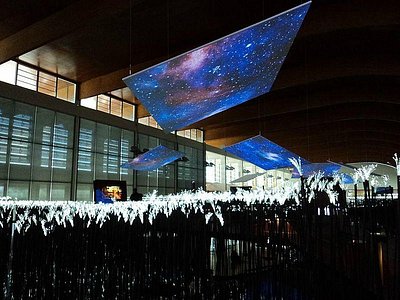 Pabellon de la Navegacion - Sevilla194Between the Barcelona Olympics and the Seville World Fair, both in 1992, Spain really stepped into the spotlight. The Pavilion of Navigation, dedicated to the golden age of Spanish navigation, was one of the largest. Created by Seville-born architect Guillermo Vázquez Consuegra, the building has elegant lines and an interior space resembling a ship’s hull. Now, it serves as the city’s naval museum.
Pabellon de la Navegacion - Sevilla194Between the Barcelona Olympics and the Seville World Fair, both in 1992, Spain really stepped into the spotlight. The Pavilion of Navigation, dedicated to the golden age of Spanish navigation, was one of the largest. Created by Seville-born architect Guillermo Vázquez Consuegra, the building has elegant lines and an interior space resembling a ship’s hull. Now, it serves as the city’s naval museum.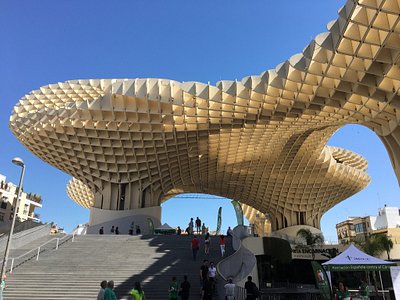 Setas de Sevilla (Metropol Parasol)10,233This cutting-edge construction—a towering, latticed wooden structure unlike any other—is the newest addition to Seville’s cultural scene. Designed by German architect Jürgen Mayer and completed in 2011, it has a lot to offer: archeological remains in the basement, a market, some restaurants, and a rooftop promenade with sweeping city views. Tip: Go at sunset to watch the skyline turn gold.
Setas de Sevilla (Metropol Parasol)10,233This cutting-edge construction—a towering, latticed wooden structure unlike any other—is the newest addition to Seville’s cultural scene. Designed by German architect Jürgen Mayer and completed in 2011, it has a lot to offer: archeological remains in the basement, a market, some restaurants, and a rooftop promenade with sweeping city views. Tip: Go at sunset to watch the skyline turn gold.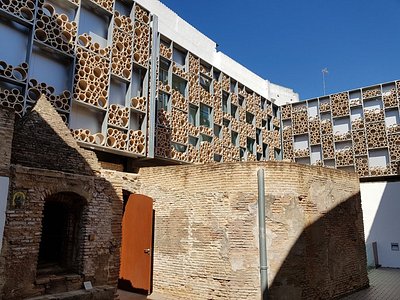 Centro Ceramica Triana108Cross the Guadalquivir River, and you’ll enter Triana, my favorite neighborhood and a buzzy nightlife district. I’d argue Triana is even better in the daytime, when you can see its famous ceramics. Set within a former tile factory, this museum honors the craft both inside and out. I love to admire the beautiful façade, which is covered in ceramic pieces.
Centro Ceramica Triana108Cross the Guadalquivir River, and you’ll enter Triana, my favorite neighborhood and a buzzy nightlife district. I’d argue Triana is even better in the daytime, when you can see its famous ceramics. Set within a former tile factory, this museum honors the craft both inside and out. I love to admire the beautiful façade, which is covered in ceramic pieces.
Browse collections
The art of flamenco
Find an oasis for a breather
All about the tapas
Buildings with a backstory
Day trips worth the trek
Seville Travel Guide
Travelers' pro tips or experiencing Seville

LaTortugaViajera
This is a place to be tasted with tapas. As such, plan to pass your meals hopping from one bar to the next, snacking and sipping in each one as you go.

Aleksandra B
The most expensive months are April, December and the Bank holidays or Special Events (Semana Santa, Feria, Marathon days, New Year's Eve..).

Cat G
The midday summer weather in Seville can reach 40C (110F), so wear proper protection, stay hydrated, and stick to the shade when you can. Seville is quite walkable, but hitting the (cobblestone) streets all day can take its toll. Wear comfortable shoes.

1highplainsdrifter
Seville has both old and new charm. It is a friendly, walkable, decently priced, clean city.
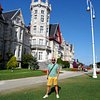
PortoExplorer
Seville is one of the Spanish cities that touched me the most: vibrant, attractive, graceful and most of all... historically rich.

Cat G
Seville exudes typical Spain — from the flamenco chords that echo in the streets to the sunny afternoons with sherry in hand, the Andalusian capital is worth spending time in. But if you've only got one day, you'll be facing a bit of walking, punctuated by tapas, world-class sights, and plenty of Spanish flair. The majority of the must-sees are clustered around the cathedral complex, a UNESCO World Heritage Site, along with the Archivo de las Indias and the Alcazar Palace.
What is the best way to get there?
flying
Seville is served by San Pablo Airport, otherwise known as Seville Airport (SEV).
bus
Seville has two main bus terminals: Prado de San Sebastian, from which buses service cities and towns in Andalucia, and Plaza de Armas, from which buses depart to different regions of Spain and Portugal.
driving
Most travelers arrive into Seville via the Autopista del Quinto Centenario (A-49), which connects the city with Huelva and Portugal.
Do I need a visa?
If you’re visiting from overseas, see if you need a visa using this website.
When is the best time to visit?
The best time to visit Seville is from March through May, before scorching summer temperatures make sightseeing an effort. Plus, springtime sees the festivals of Semana Santa (Holy Week), during which the city is overrun with religious processions, and Feria de Abril, a fair that celebrates Seville’s culture with flamenco and food.
For more information on Seville’s weather and when to go, check out some tips here.
Get around
bus
The easiest way to explore Seville is by hop-on hop-off bus, which allows you to explore at your own pace and cover all of the city’s top attractions. See here for more information on routes and timetables.
bike
There are plenty of bike rental shops in Seville. Cycling is generally a safe and convenient way to explore.
tram
Seville’s Metro-Centro tram network begins in Plaza Nueva in the center of the city and terminates at San Bernado train station, which offers connections to the metro. You can buy a ticket from each tram station.
On the ground
What is the timezone?
Central European Standard Time (GMT+1)
What are the voltage/plug types?
The standard voltage in Seville is 230V and the standard frequency is 50Hz. Associated plug types are type C, with two round pins, and type F, with two round pins and two earth clips. For plug types, you can reference the international guide here.
What is the currency?
Euro (EUR)
Are ATMs readily accessible?
Yes.
Are credit cards widely accepted?
Yes.
Is it easy to find a bank?
Yes.
How much do I tip?
Tipping in Spain is not expected and Spaniards generally don’t do it. However, tips are appreciated when service exceeds expectations.
Are there local customs I should know?
Greetings
In Seville, people generally greet each other and say goodbye by kissing on both cheeks.
Siesta
Throughout Spain, it's common to take a siesta (afternoon nap) around 3 pm. During the late afternoon, shops and cafes tend to close.
Mealtimes
In Spain, lunch and dinner times are much later than in other countries. Lunch is normally eaten around 2 pm while dinner tends to get served closer to 10 pm.
Drinking
The federal legal age for buying and drinking alcohol is 18 years old.
Bar Etiquette
Don’t be surprised if you see people throwing used napkins and toothpicks on the ground at traditional tapas bars. This isn’t the case in every tapas bar, so observe what others are doing before littering.
- We recommend staying at one of the most popular hotels in Seville, which include:
- Some of the most popular restaurants in Seville include:
- Seville is known for some of its popular attractions, which include:
- We recommend checking out these popular tours when looking for something to do in Seville:
- Alcazar and Cathedral of Seville Tour with Skip the Line Tickets
- Flamenco Show at Tablao El Arenal with Drink and Optional Dinner or Tapas
- Sevilla Food Tour: Tapas, Wine, History & Traditions
- White Villages and Ronda Day Tour from Seville
- Alhambra Palace and Albaicin Tour with Skip the Line Tickets from Seville
- If you're a more budget-conscious traveler, then you may want to consider traveling to Seville between June and August, when hotel prices are generally the lowest. Peak hotel prices generally start between March and May.






